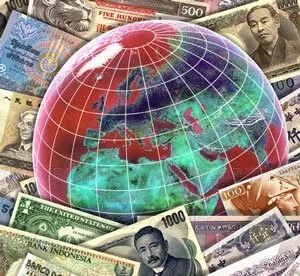“PANIC: THE HISTORY OF MODERN FINANCIAL INSANITY”: MICHAEL LEWIS BOOK
December 5, 2008 at 4:41 am | Posted in Books, Economics, Financial, Research, USA | Leave a commentPanic: The Story of Modern Financial Insanity
by Michael Lewis (Editor)
Editorial Reviews
Product Description
A masterful account of today’s money culture, showing how the underpricing of risk leads to catastrophe.
When it comes to markets, the first deadly sin is greed. Michael Lewis is our jungle guide through five of the most violent and costly upheavals in recent financial history: the crash of ’87, the Russian default (and the subsequent collapse of Long-Term Capital Management), the Asian currency crisis of 1999, the Internet bubble, and the current sub-prime mortgage disaster. With his trademark humor and brilliant anecdotes, Lewis paints the mood and market factors leading up to each event, weaves contemporary accounts to show what people thought was happening at the time, and then, with the luxury of hindsight, analyzes what actually happened and what we should have learned from experience.
As he proved in Liar’s Poker, The New New Thing, and Moneyball, Lewis is without peer in his understanding of market forces and human foibles. He is also, arguably, the funniest serious writer in America.
About the Author
Michael Lewis‘s most recent best-selling book was The Blind Side. He lives in Berkeley, California, and is working on a book about New Orleans and Hurricane Katrina.
Michael Lewis, who previously wrote the popular book “Liar’s Poker,” takes his own spin on our country’s most notable financial catastrophes of the last twenty years. These include:
1. The 1987 stock market crash
2. Russian default and eventual failure of Long-Term Capital Management (hedge fund)
3. The Asian currency crisis
4. The bursting of the Internet stock bubble
5. And, of course, the recent subprime debacle
This book’s analysis is quite comprehensive, and, as you can imagine, the shortcoming of looking at so many factors is the treatment of each could be more thorough. The commentary and analysis that is there is excellent, and I learned a lot from it. Lewis spends a lot of time rehashing the best of past analyses from the likes of economists Joseph Stieglitz and Paul Krugman and Wall Street Journal reporters Gregory Zuckerman and Roger Lowenstein. There are excerpts from his own previous books and articles, including an account of his time as a trader at Salomon Brothers in the midst of the junk bond crash of 1987 and his observations on the Internet boom and bust. Overall his narrative is elegant and profound, and the arguments are on-target, including his lambasting of shoddy risk management at financial firms, foolish principles guiding sophisticated Wall Street traders, and the problems caused “by the new complexities of the financial markets.”
|
Product Details:
|
The chapter list:
Introduction: Inside Wall Street’s Black Hole
Part I: A Brand-New Kind of Crash
1. Stephen Koepp, “Riding the Wild Bull”
2. Scott McMurray and Robert L. Rose, “The Crash of ’87: Chicago’s `Shadow Markets’ Led Free Fall in a Plunge That Began Right at Opening”
3. From the Brady Commission Report
4. Tim Metz, from Black Monday: The Catastrophe of October 19, 1987 … and Beyond
5. Michael Lewis, from Liar’s Poker: Rising through the Wreckage on Wall Street
6. Stephen Labaton, “The Lonely Feeling of Small Investors”
7. Richard J. Meislin, “Yuppies’ Last Rites Readied”
8. Eric J. Weiner, from What Goes Up
9. Lester C. Thurow, “Did the Computer Cause the Crash?”
10. Terri Thompson, “Crash-Proofing the Market; A Lot of Expert Opinions, but Few Results”
11. The Economist, “Short Circuits”
12. Robert J. Shiller, “Crash Course: Black Monday’s Biggest Lesson — Don’t Run Scared”
13. Franklin Edwards, from After the Crash
Part II: Foreigners Gone Wild
14. Reed Abelson, “Mutual Funds Quarterly Report; The Forecast Looks Brighter for Adventure Travel”
15. The New York Times, “Thailand Warns Currency Speculators”
16. David Holley, “A Thai Business Wonders, Will It All Crumble?”
17. Paul Krugman, Reporter Associate Jeremy Kahn, “Saving Asia”
18. Interview with Rob Johnson, from Frontline’s “The Crash”
19. The Economist, “Finance and Economics: A Detour or a Derailment?”
20. Michael Lewis, “Pulling Russia’s Chain”
21. Interview with Jeffrey D. Sachs, from Frontline’s “The Crash”
22. Michael Lewis, “How the Eggheads Cracked”
23. Joseph Stiglitz, “10 Years After the Asian Crisis, We’re Not Out of the Woods Yet”
24. Keith Bradsher, “Asia’s Long Road to Recovery”
25. Choe Sang-Hun, “Tracking an Online Trend, and a Route to Suicide”
Part III: The New New Panic
26. The New York Times, “Bigger Netscape Offering”
27. The New York Times, “Underwriters Raise Offer Price for Netscape Communication”
28. Laurence Zuckerman, “With Internet Cachet, Not Profit, a New Stock is Wall St.’s Darling”
29. Carrick Mollenkamp and Karen Lundegaard, “How Net Fever Sent Shares of a Firm on 3-Day Joy Ride”
30. Michael Lewis, “New New Money,” from The New New Thing
31. Rebecca Buckman and Aaron Lucchetti, “Cooling It: Wall Street Firms Try to Keep Internet Mania from Ending Badly”
32. Jack Willoughby, “Burning Up”
33. John Cassidy, from […]: The Greatest Story Ever Told
34. Erick Schonfeld, “The High Price of Research: Caveat Investor: Stock and Research Analysts Covering Dot-Coms Aren’t as Independent as You Think”
35. Katherine Mieszkowski, “[…]: Internet Companies Threw Millions into the Air at he Super Bowl. They’re Still Pretending They Scored a Touchdown.”
36. Mark Gimein, “Meet the Dumbest Dot-Com in the World”
37. James Surowiecki, “The Financial Page: How Mountebanks Became Moguls”
38. Jerry Useem, “Dot Coms: What Have We Learned”
39. Michael Lewis, “In Defense of the Boom”
Part IV: The People’s Panic
40. Dave Barry, “How to Get Rich in Real Estate,” from Dave Barry’s Money Secrets
41. John Hechinger, “Shaky Foundation: Rising Home Prices Cast Appraisers in a Harsh Light”
42. John Cassidy, “The Next Crash”
43. Robert Julavits, “As Bubble Speculation Rises, Industry Sees Little Fear”
44. Peter S. Goodman, “This Is the Sound of a Bubble Bursting”
45. Christopher Dodd, Opening Statement of Chairman Christopher Dodd, Hearing on “Mortgage Market Turmoil: Causes and Consequences”
46. James Surowiecki, “Subprime Homesick Blues”
47. Roger Lowenstein, “Triple-A Failure”
48. Larry Roberts, from “Rudolph the Red-Nosed Reindeer”
49. Kate Kelly, “Bear CEO’s Handling of Crisis Raises Issues”
50. Michael Lewis, “What Wall Street’s CEOs Don’t Know Can Kill You”
51. David Henry and Matthew Goldstein, “The Bear Flu: How It Spread”
52. Michael Lewis, “A Wall Street Trader Draws Some Subprime Lessons”
53. Paul Krugman, “After the Money’s Gone”
54. Matthew Lynn, “Hedge Funds Come Unstuck on Truth-Twisting, Lies”
55. Gregory Zuckerman, “Trader Made Billions on Subprime”
Panic: The Story of Modern Financial Insanity
by Michael Lewis (Editor)









